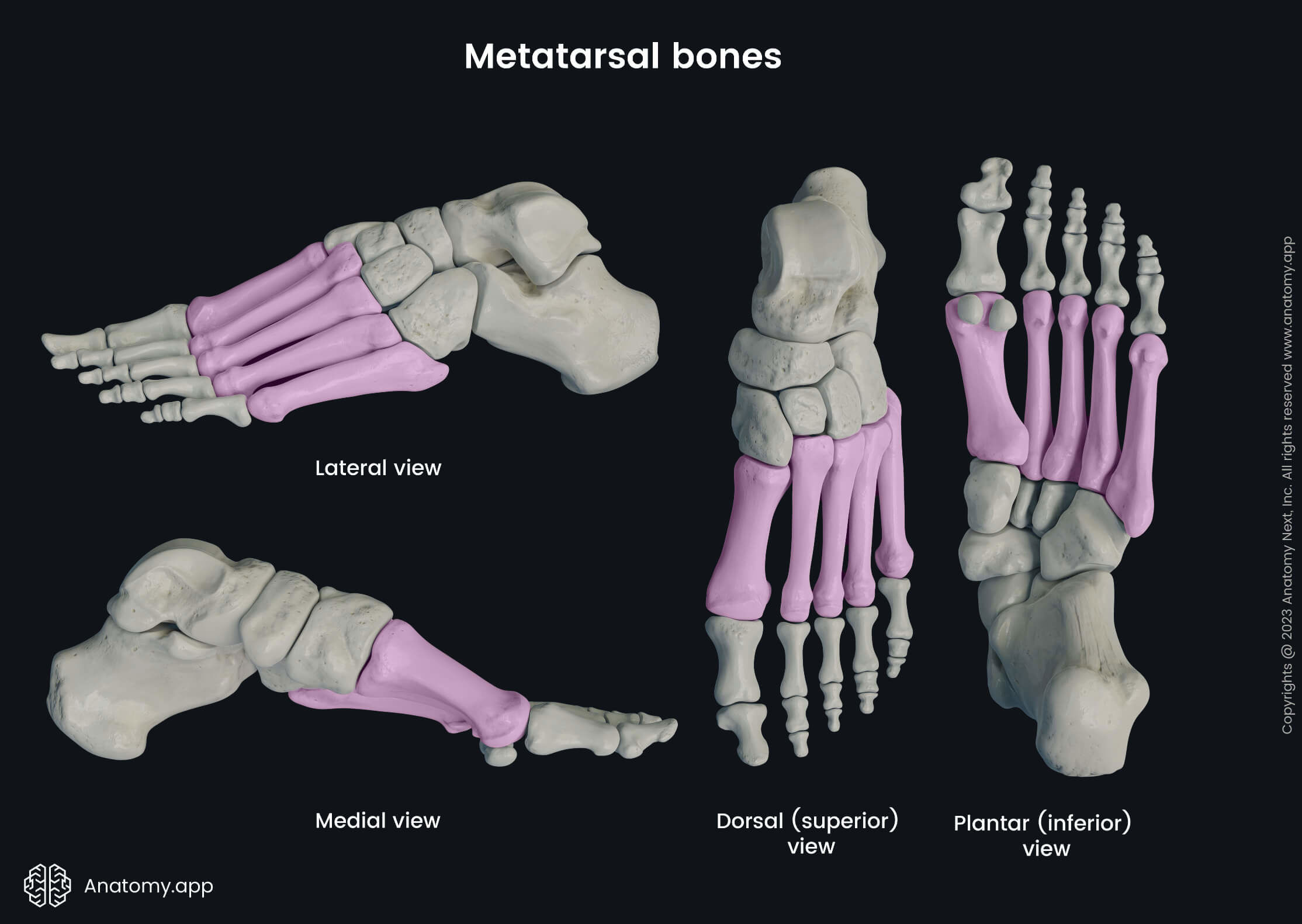- Anatomical terminology
- Skeletal system
- Joints
- Muscles
- Heart
- Blood vessels
- Lymphatic system
- Nervous system
- Respiratory system
- Digestive system
- Urinary system
- Female reproductive system
- Male reproductive system
- Endocrine glands
- Eye
- Ear
Metatarsal bones
The metatarsal bones (Latin: metatarsus, ossa metatarsi, ossa metatarsalia) are also known as the metatarsals. They are a group of five bones that form the middle part of the bones located in the foot. The metatarsal bones are positioned between the proximal located tarsal bones and distally located phalanges. The metatarsal bones are analogous to the metacarpal bones found in hand.


All metatarsal bones lack individual names. Every metatarsal bone has a number, and they are numbered from the medial side of the foot - the first, second, third, fourth, and fifth metatarsal bone.

Between two metatarsal bones is present a space called the interosseous metatarsal space. The metatarsal bones are classified as the long bones, and as every long bone, each metatarsal bone consists of:
- Base - at the proximal end;
- Body or shaft - the middle part of each bone;
- Head - at the distal end.

Base
The bases or proximal extremities of the metatarsal bones form several joints. Proximally they articulate with the tarsal bones creating tarsometatarsal joints. The sides of the bases articulate with the adjacent bases and form the intermetatarsal joints. The dorsal and plantar surfaces of the bases are rough and serve as attachment sites for ligaments.
Body
The body or shaft of each metatarsal bone appears prismoid-shaped and slightly curved. It is concave on the dorsal surface and slightly convex on the plantar surface. The body extends between the base and the head of the bone.
Head
The head or the distal extremity of each metatarsal bone presents a convex articular surface that articulates with the base of the proximal phalanx. These articulations between metatarsal bones and proximal phalanges form the metatarsophalangeal joints. The sides of the heads serve as attachment sites for ligaments. The plantar surfaces of the heads contain grooves for the passage of the flexor tendons.